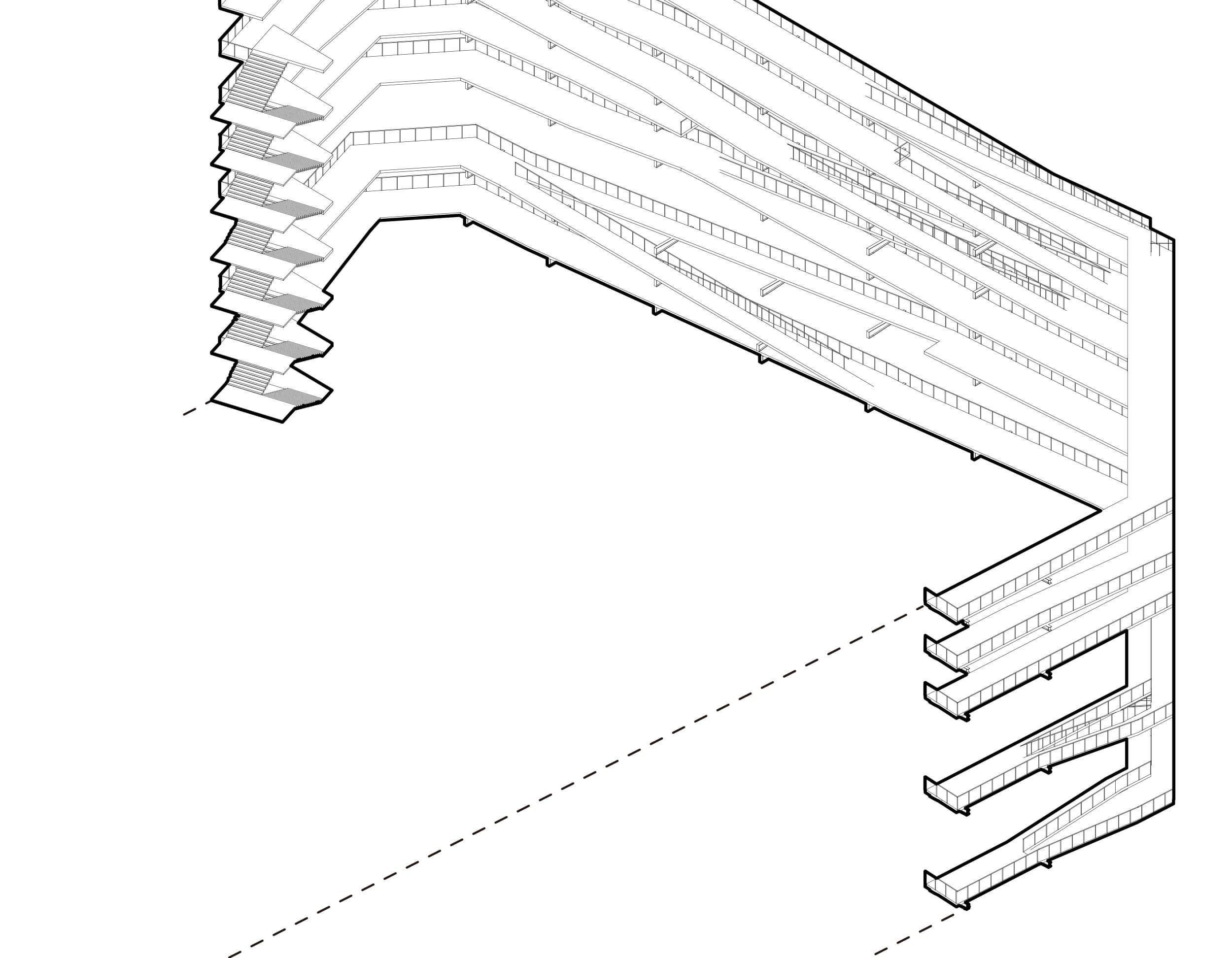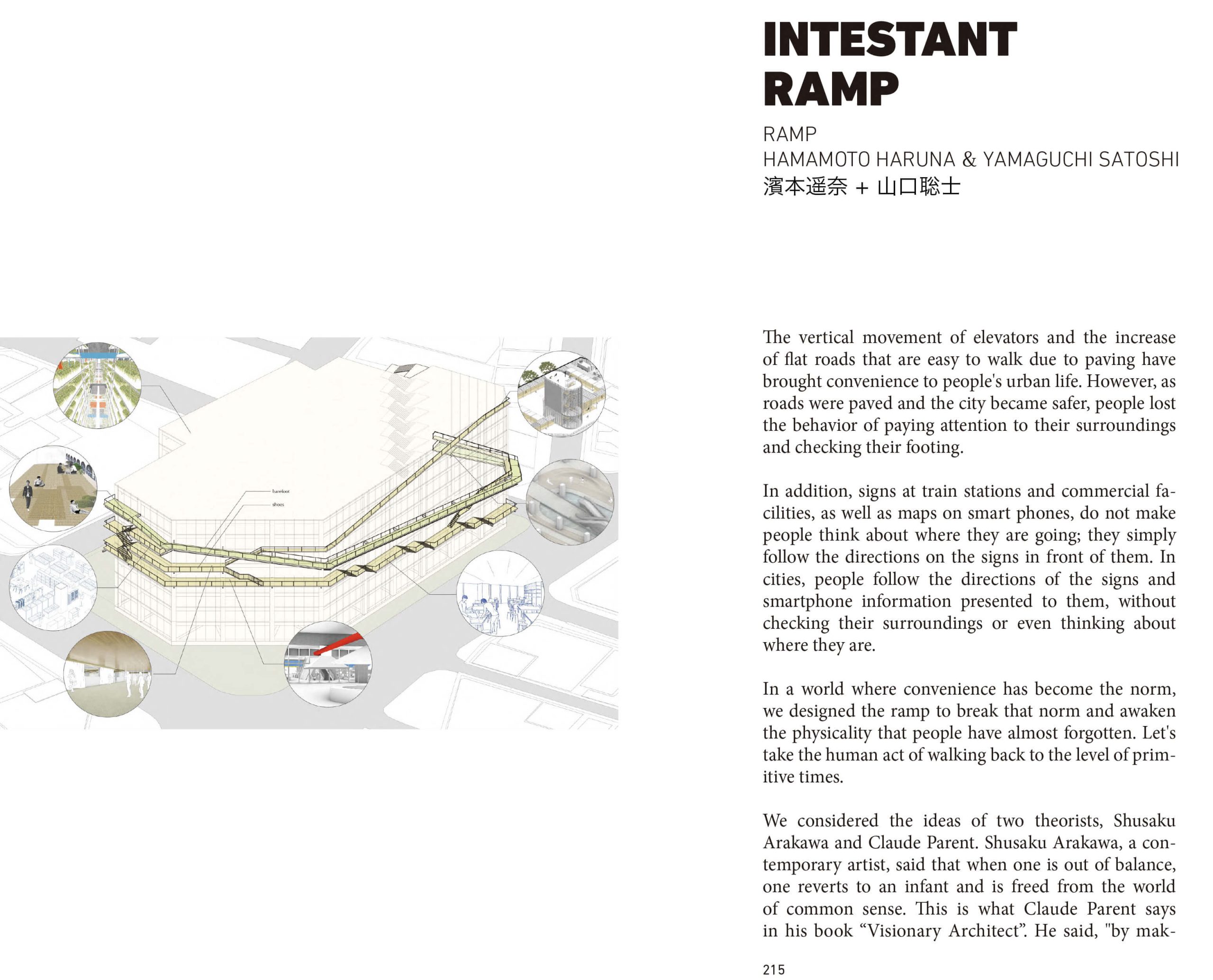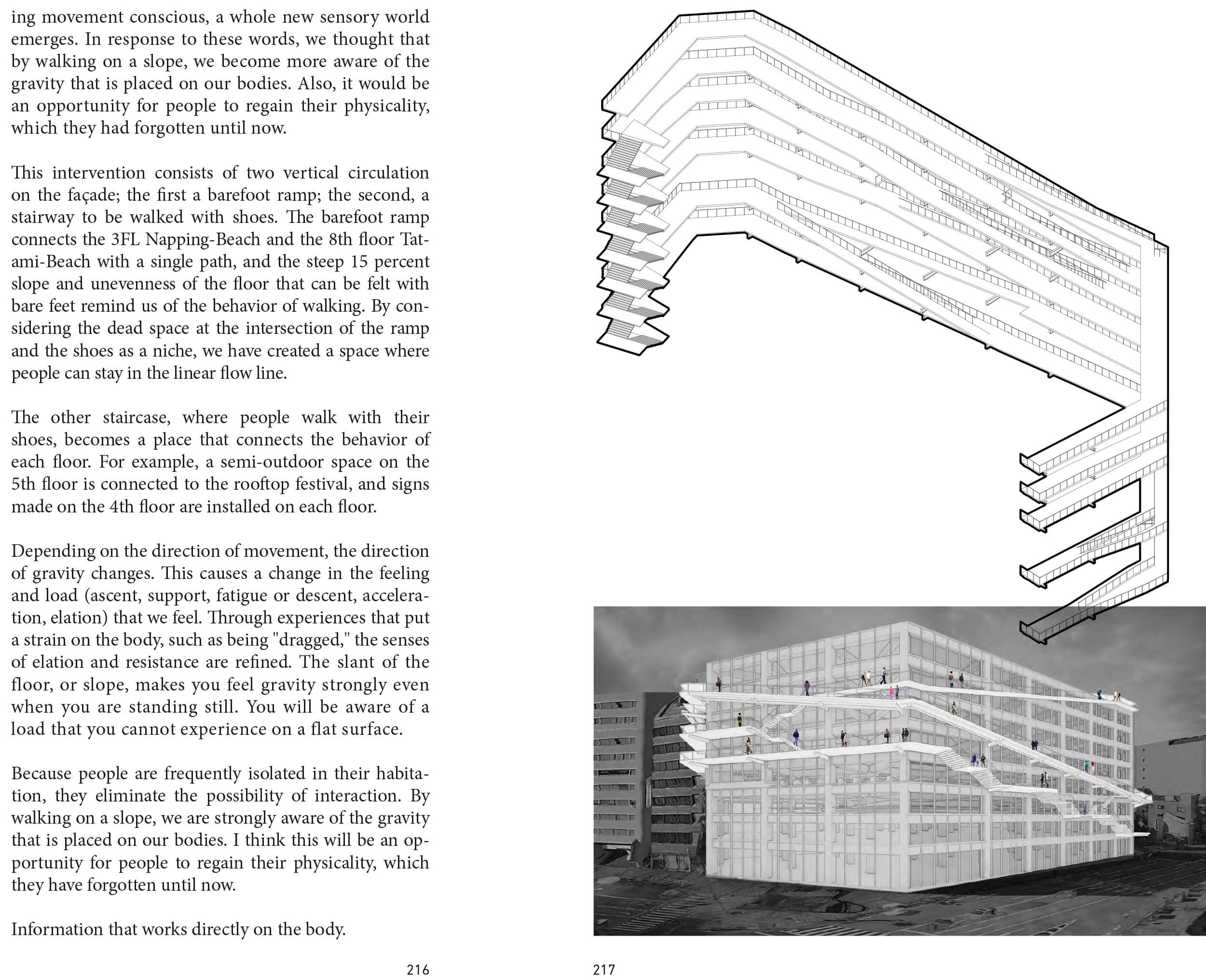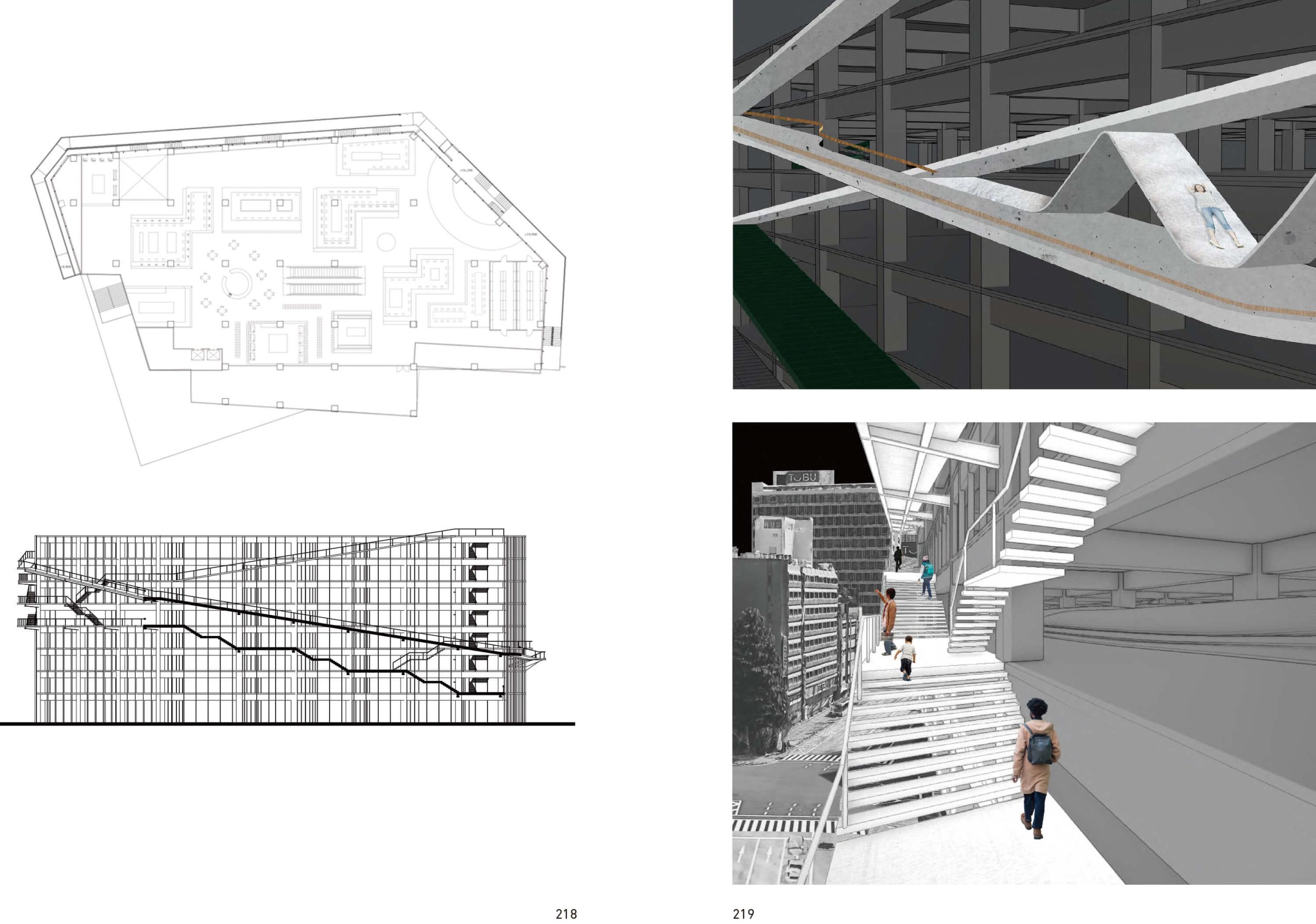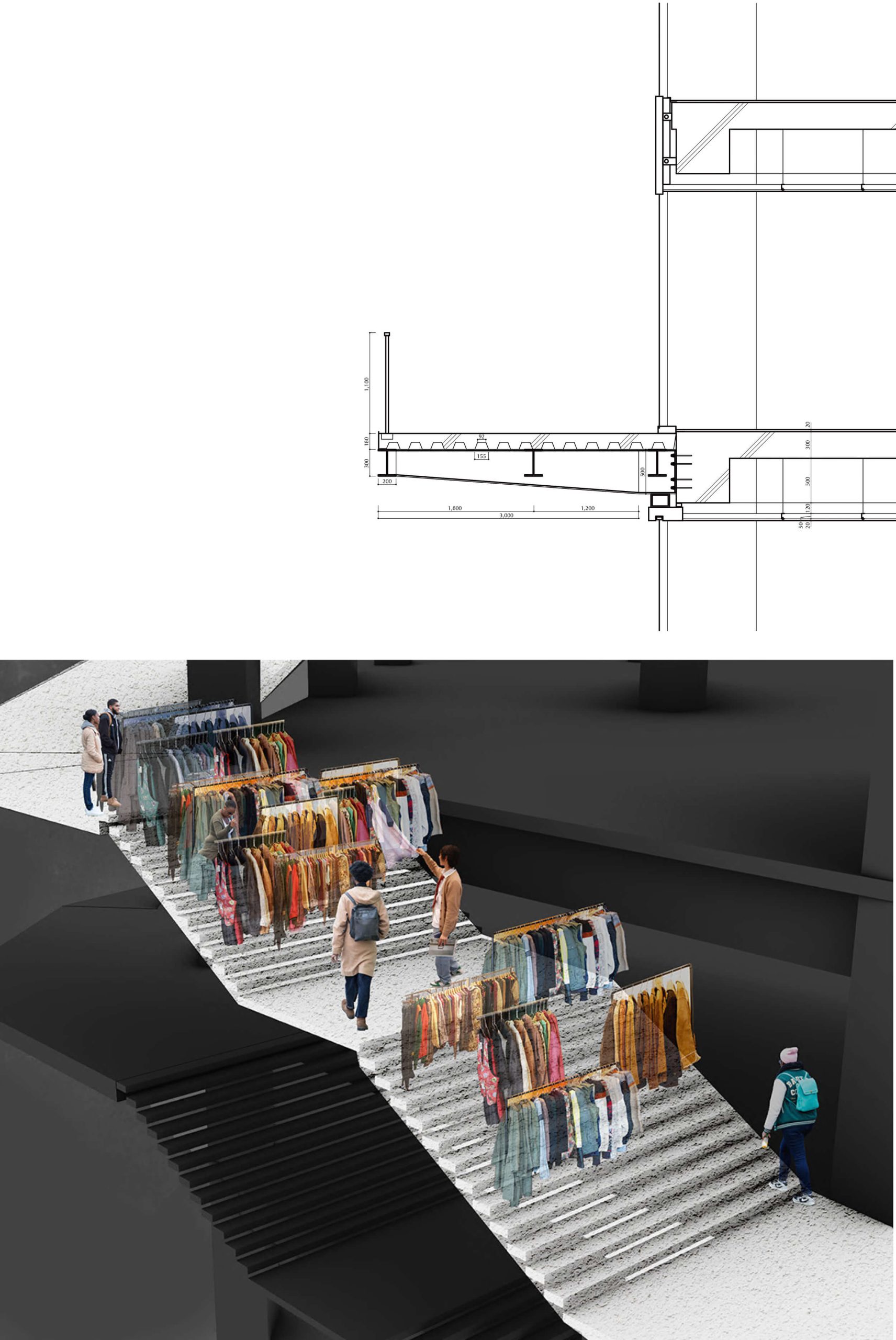The vertical movement of elevators and the increase of flat roads that are easy to walk due to paving have brought convenience to people’s urban life. However, as roads were paved and the city became safer, people lost the behavior of paying attention to their surroundings and checking their footing.
In addition, signs at train stations and commercial fa- cilities, as well as maps on smart phones, do not make people think about where they are going; they simply follow the directions on the signs in front of them. In cities, people follow the directions of the signs and smartphone information presented to them, without checking their surroundings or even thinking about where they are.
In a world where convenience has become the norm, we designed the ramp to break that norm and awaken the physicality that people have almost forgotten. Let’s take the human act of walking back to the level of prim- itive times.
We considered the ideas of two theorists, Shusaku Arakawa and Claude Parent. Shusaku Arakawa, a con- temporary artist, said that when one is out of balance, one reverts to an infant and is freed from the world of common sense. This is what Claude Parent says in his book “Visionary Architect”. He said, “by makg movement conscious, a whole new sensory world emerges. In response to these words, we thought that by walking on a slope, we become more aware of the gravity that is placed on our bodies. Also, it would be an opportunity for people to regain their physicality, which they had forgotten until now.
This intervention consists of two vertical circulation on the façade; the first a barefoot ramp; the second, a stairway to be walked with shoes. The barefoot ramp connects the 3FL Napping-Beach and the 8th floor Tat- ami-Beach with a single path, and the steep 15 percent slope and unevenness of the floor that can be felt with bare feet remind us of the behavior of walking. By con- sidering the dead space at the intersection of the ramp and the shoes as a niche, we have created a space where people can stay in the linear flow line.
The other staircase, where people walk with their shoes, becomes a place that connects the behavior of each floor. For example, a semi-outdoor space on the 5th floor is connected to the rooftop festival, and signs made on the 4th floor are installed on each floor.
Depending on the direction of movement, the direction of gravity changes. This causes a change in the feeling and load (ascent, support, fatigue or descent, accelera- tion, elation) that we feel. Through experiences that put a strain on the body, such as being “dragged,” the senses of elation and resistance are refined. The slant of the floor, or slope, makes you feel gravity strongly even when you are standing still. You will be aware of a load that you cannot experience on a flat surface.
Because people are frequently isolated in their habita- tion, they eliminate the possibility of interaction. By walking on a slope, we are strongly aware of the gravity that is placed on our bodies. I think this will be an op- portunity for people to regain their physicality, which they have forgotten until now.
Information that works directly on the body.
